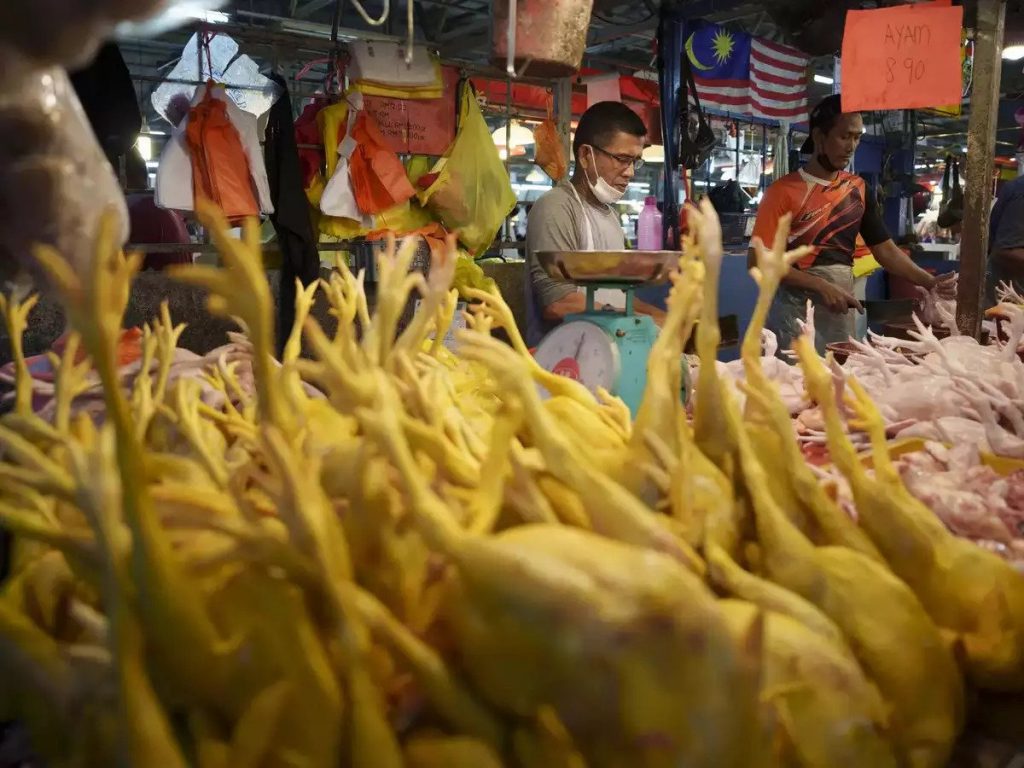When war combines with a pandemic, it is, indeed, a recipe for disaster. Almost every country is having a taste of it, but Singapore is paying the worst price as its staple diet – chicken-rice – is faced with the threat of disappearing from the menu of 5.5 million citizens of the city-state. Singapore is bracing for a shortage of its de facto national dish as major supplier Malaysia has halted all chicken exports from the beginning of June.
There is panic everywhere and a mad rush to stock as many of the birds as possible to stave off the crisis as long as possible. This further complicates the situation as private hoarding leads to chicken going out of the market too fast. Restaurants and street stalls in Singapore are faced with raising prices of the staple food or shutting down altogether as their supplies dwindle. The main cause for the unprecedented crisis is the decision of neighbouring Malaysia to ban export of chicken. This has dealt a great blow to the supply chain as Singapore imports one third of its need which amounts to 3.5 million chickens a month. But, Malaysia is not to blame for the ban since production there has been disrupted by a global feed shortage.
In fact, Malaysia’s export ban is the latest case of growing global food shortages as countries, reeling under the effects of Russia’s invasion of Ukraine and the COVID-19 pandemic-related supply disruptions, are scrambling to maintain their own domestic supplies and control food inflation. Rising prices for basic food items have already triggered protests in countries such as Argentina, Indonesia, Greece and Iran. India has already banned export of wheat and sugar so that it can meet its domestic demands. It is the second largest sugar exporter in the world. Indonesia also blocked exports of palm oil to rein in domestic cooking oil prices, though it is now trying to relax the export restrictions.
Unfortunately, Singapore is faced with a situation unlike any other country because of its people’s food habits and the city-state’s geographical position. Malaysia’s ban, fear owners of many supply chains in Singapore, will be catastrophic for vendors. The ban would mean they would no longer be able to sell and they compare their plight with the hypothetical situation where McDonald’s is unable to sell burgers. Singapore is among the wealthiest countries in Asia, but it has a heavily urbanised land area of just 280 square miles for which it has to depend largely on imported food, energy and other goods. Nearly all of its chicken is imported – 34 per cent from Malaysia, 49 per cent from Brazil and 12 per cent from the United States, according to data from the Singapore Food Agency (SFA).
A plate of chicken and white rice cooked in broth served with a side of greens is a dish the country’s population loves most. It is usually widely available for about 4 Singapore dollars (US$2.92) at eateries known as hawker centres. The dietary habit of the population is such that they take rice with chicken brought live from Malaysia and cooked fresh in Singapore. The only option that the Malaysian ban has forced on Singapore is to switch to using frozen chicken. But, the people detest the choice so much that frozen chicken with rice is a “no-go.” Knowing well the alimentary habit of Singaporeans, the SFA has urged the consumers to opt for other protein sources such as fish and make do, at least for the time being, with frozen chicken from Brazil.
Malaysia itself is facing soaring prices as the bloody conflict between Russia and Ukraine has caused a severe dislocation in the supply of feed. Chicken feed typically consists of grain and soybean, which Malaysia imports. But the government is having to consider alternatives amid a global feed shortage due to the war and the pandemic. Lower-quality feed means the birds are not growing as fast as usual, slowing down the entire supply chain.
Prime Minister of Singapore, Lee Hsien Loong, does not find a ray of hope in the prevailing gloomy situation in the world due to the Ukraine war. In a loaded message, he warned his people to be prepared for the worst. “This time it is chicken, next time it may be something else. We have to be prepared for this,” he said.
It does not augur well, especially for the poor who are the hardest hit when prices of essential commodities go up or supplies dry up for some reason or the other. The common man in India is currently being made to pay through his nose to buy fuel, a steep rise of which has already got cascading effects pushing the prices of common food items sky high. The attention of the big players in the Russia-Ukraine conflict has so long been riveted on the geopolitical impact and effects of sanctions by the US and its allies on Russia. The present situation reconfirms the age old belief that leaders and rulers do not care a bit for the lowest in the economic ladder. Their cries are not heard nor seen by the rich and powerful of any nation.
